On February 28,2022, the Instrument Review Center of the State Food and Drug Administration issued the notice of polyether ether one implants for additive Manufacturing (No. 3,2022) : In order to further standardize the management of additive manufacturing polyether ether ketone implants, the Instrument Examination Center of the State Food and Drug Administration has formulated the Guidelines for registration and review of additive manufacturing polyether ether ketone implants. This means that 3D printing-additive manufacturing polyether ether ketone implant has entered the stage of industrialization.
Of all the additive manufacturing methods, melt deposition molding (FDM), the most commonly used, low-cost 3D printing technology of thermoplastic materials, has always been an alternative to processing PEEK components. However, some challenges in successfully achieving FDM printing PEEK remain to the high melting temperature, especially the packing phenomenon of its microstructure. Currently, the effects of printing parameters on formability and mechanical properties attract increasing interest, and should be intensively investigated to expand the range of biomedical applications of FDM printing PEEK.
Xin Hua's research team from Shaanxi University of Science and Technology studied the surface characteristics, microstructure and mechanical properties of fused deposition-molded polyetheretherketone (PEEK) at different grating angles. The results of this study can provide a reference for PEEK FDM 3D printing, allowing this technique to be implemented in applications such as orthopedic implants.

Polymers 2022, 14(1),77;https://doi.org/10.3390/polym1401007
Support Xin Hua's research team
Xin Hua's research team is mainly engaged in the application of biotribology, biomechanics, orthopaedic implant design and analysis, and polyetheretherketone medical polymers. Facilitating Research Spotlight: Surface Characteristics, Microstructure and Mechanical Properties of Polyetheretherketone (PEEK)
Additive manufacturing offers a novel and robust method to fabricate medical products with anatomically matched geometries and tailored mechanical properties. In this study, the surface characteristics, microstructure and mechanical properties of polyetheretherketone (PEEK) prepared by fused deposition modeling (FDM) were systematically investigated. During the FDM process, the unit cell and thermal properties of the PEEK material remain unchanged, while the surface layer generally becomes more hydrophilic and the surface hardness decreases significantly. The grating angle has a significant effect on the mechanical strength, but has no effect on the failure mechanism. In practice, FDM-manufactured PEEK is more like a laminate than a complete structure. Its main failure mechanism is related to internal voids. The results show that the grid angle of 30° in the horizontal filling direction is promising to obtain better comprehensive mechanical properties, and the corresponding tensile, flexural and shear strengths are (76.5 ± 1.4) MPa, (149.7 ± 3.0) MPa and (55.5) MPa, respectively. ±1.8) MPa. The results of this study provide guidelines for FDM-PEEK to enable its implementation in applications such as orthopaedic implants.
Help research test samples
The geometry of the test specimens is according to the respective standards for each of the tests described below for bending test specimens; ASTM-D5379M (2012) for shear test specimens; The disc sample standards were fabricated on the XY plane based on the tribometer's grip), which allowed us to evaluate the mechanical properties of the samples against existing injection-molded PEEK data.
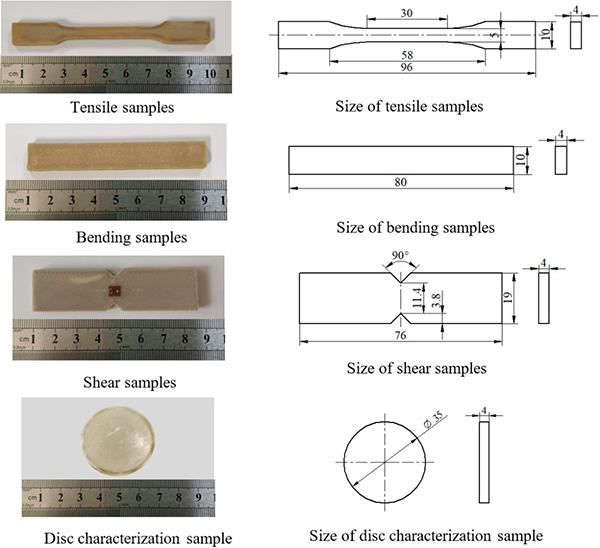
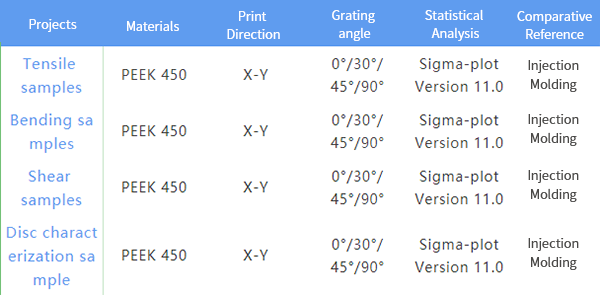
APIUM Bio 3D Printer
The Apium M220 is a 3D printer designed for the manufacture of medical products and PEEK implants. Personalized orthopaedic implants can be produced by 3D printing to meet clinical and scientific needs (material engineering, biological tissue engineering).
3D printing filament: VESTAKEEP® i4 3DF-T
VESTAKEEP® i4 3DF-T is an extruded filament from natural, high viscosity VESTAKEEP® i4 G polyetheretherketone (PEEK) resin. The scientific research-grade material has exactly the same processing technology and mechanical properties as the implant material, but it does not provide the documents required for the marketing approval of the medical device.
Micro-CT scans of standard sections of tensile specimens with different grating angles.
(a) PEEK-XY-0◦; (b) PEEK-XY-30◦; (c) P
This study passes through FMD print paths of tensile specimens with four different grating angles (PEEK-XY-0◦, PEEK-XY-90◦, PEEK-XY-30◦, and PEEK-XY-45◦). All samples were printed horizontally (x-y plane), first building the shell to create the outline, then 100% fill with different grid angles.Results were compared using one-way ANOVA with pairwise multiple comparisons. All statistical analyses were performed using Sigma-plot Version 11.0 (Systat Software Inc., Palo Alto, CA, USA), significance level was set at P < 0.05, and error bars were used to represent standard deviation. In addition, injection-molded PEEK450G parts were selected for comparison.
Study Conclusions Orthopedic Implants
The FDM process does not change the microstructure and thermal properties of the PEEK material, but it does change the overall crystallinity, which can only reach about 70% of the injection-molded PEEK 450G. Regardless of the grating angle used, the surface layer hardness also showed a significant decrease. PEEK-XY-30° became more hydrophilic and facilitated cell adhesion. The grating angle exhibits a significant effect on the mechanical strength, as the FDM-PEEK part is more like a laminate structure than a complete structure. The main fracture behavior is related to the internal defects and the bond strength between the laminar structures. The voids within PEEK filaments can act as stress concentration points and promote the formation of microcracks, which greatly reduce the mechanical strength. The results of this study could provide guidelines for FDM-PEEK to enable its use in applications such as orthopaedic implants.
Click here to download the full paper
Please follow the official account of Shanghai Jinting Electromechanical Technology Co., Ltd. to view the attachments in the article "[MDPI] Shaanxi University of Science and Technology Research Findings on Surface Properties, Microstructure and Mechanical Properties of PEEK in FDM Printing".



























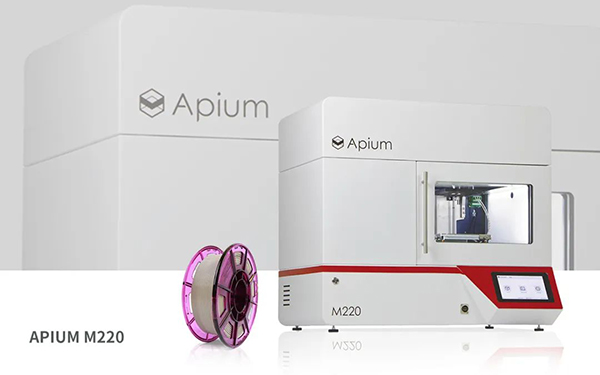

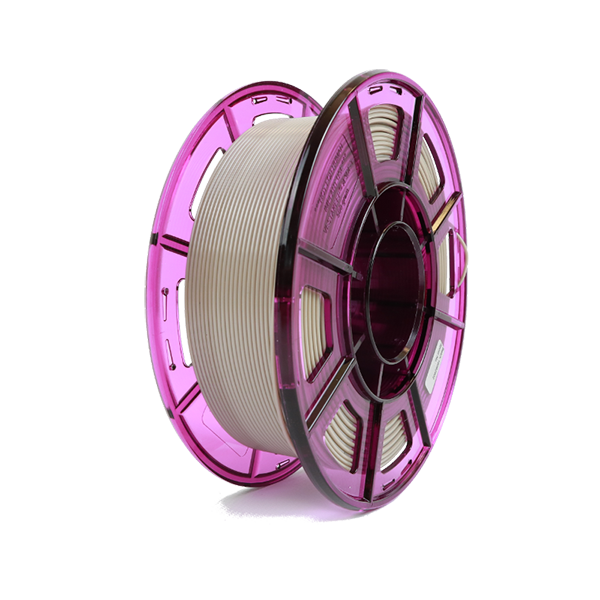
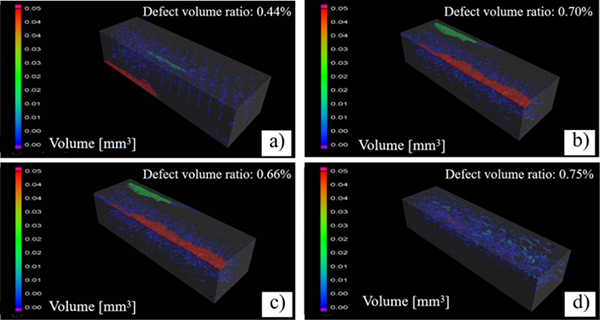
 Home
Home Telephone
Telephone Message
Message







